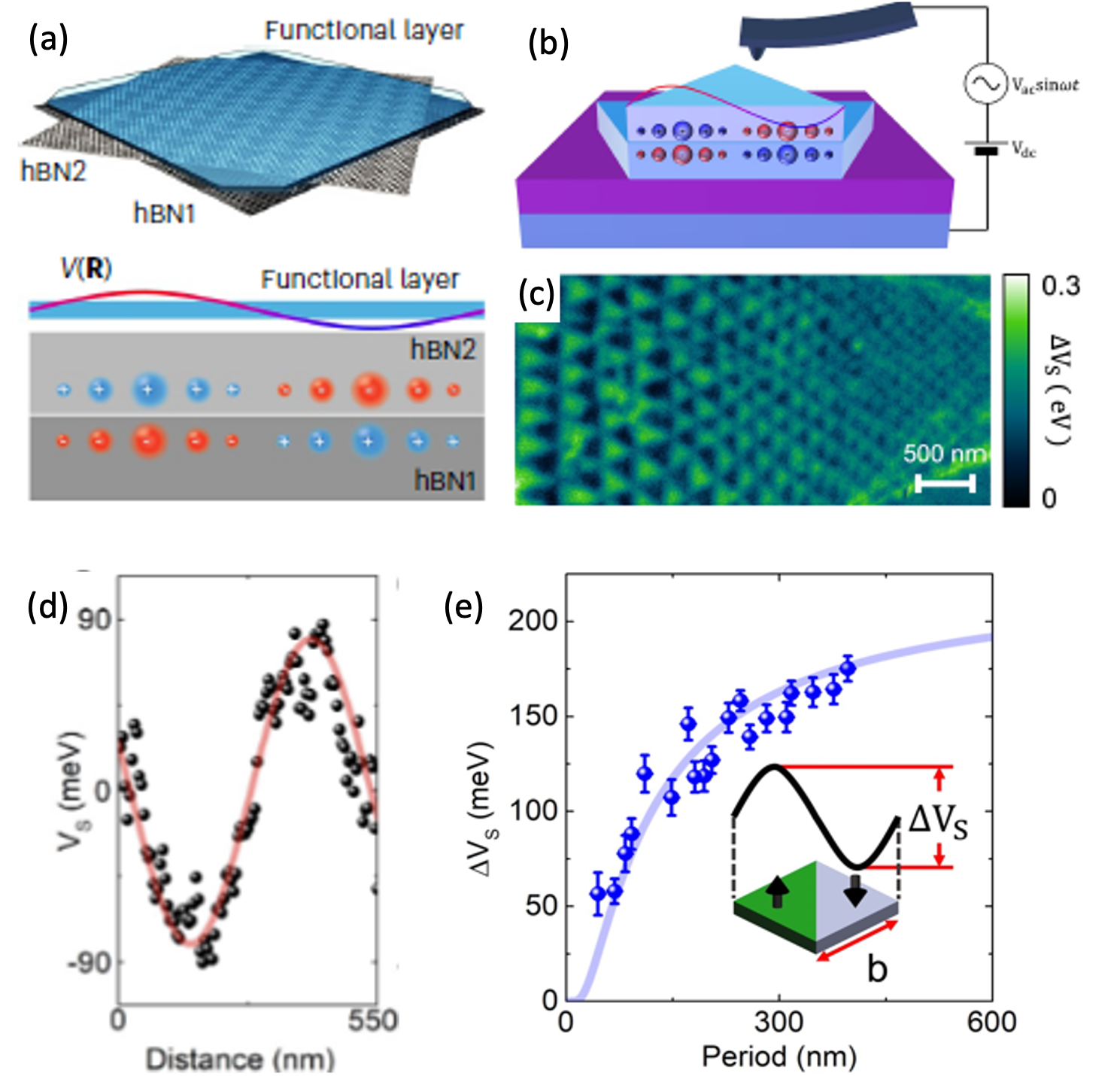Electrostatic Moiré Potential from Twisted Hexagonal Boron Nitride Layers
The central goal of this DMREF project is to search for and realize artificial multiferroic materials consisting of van der Waals (vdW) material building blocks. Hexagonal boron nitride (hBN) is widely used in building vdW heterostructures as encapsulation layers, tunneling barriers.
Xiaoqin Elaine Li and Keji Lai (U. TX-Austin) Li Yang (Washington U.)

The central goal of this DMREF project is to search for and realize artificial multiferroic materials consisting of van der Waals (vdW) material building blocks. Hexagonal boron nitride (hBN) is widely used in building vdW heterostructures as encapsulation layers, tunneling barriers. Recognizing that by sliding the layers or twisting hbN layers, a spontaneous polarization forms due to broken inversion symmetry at the interface, our team further investigate this moiré ferroelectric phenomena quantitatively. We found the following:
•The polarization magnitude agrees with the first-principles calculation for interfacial charge redistribution
•An electrostatic potential arises on the surface of twisted hBN layer that may be used to modify the properties of another functional layer. We will investigate a magnetic layer in our program
•We quantified this electrostatic potential using Kelvin probe force microscopy in collaboration with a PREM partner, Prof. Yoichi Miyahara at Texas State University.
•We quantified the supercell size dependence of the electrostatic potential, laying the foundation for moiré engineering.